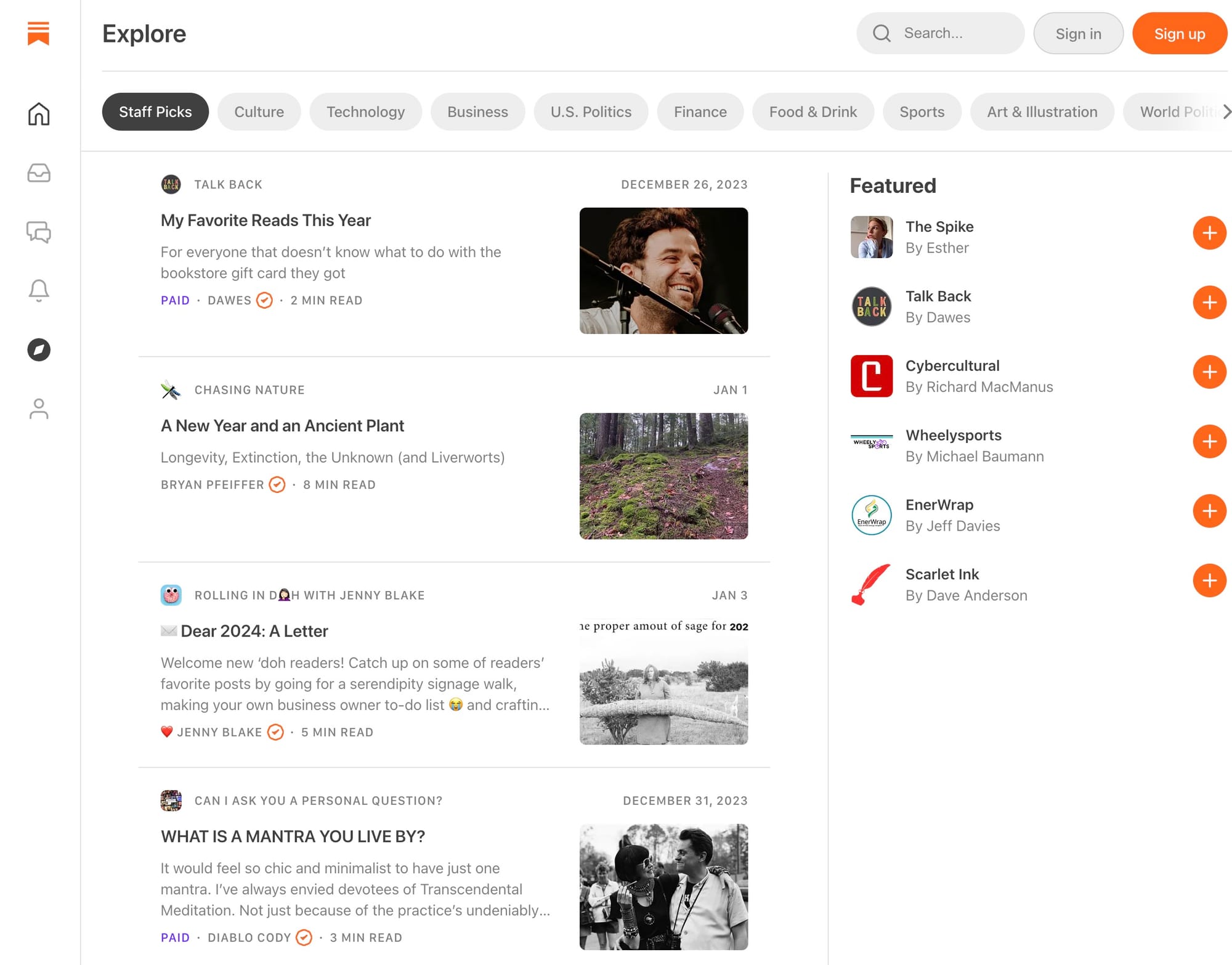Substack wants to have its cake and eat it too
Casey Newton: Substack Says It Will Remove Nazi Publications From the Platform
over the past couple years Substack has come to more closely resemble the social networks it often criticizes. Each week, Substack sends users a personalized, algorithmically ranked digest of posts from writers they don’t yet follow — a feature that can help fringe publications build larger audiences and make more money than they would otherwise. And last year Substack launched Notes, a text-based social feed similar to Twitter that also surfaces personalized content in a ranked feed.
This blog is hosted on Digital Ocean and I’m sure there are Nazis who use Digital Ocean to host their abhorrent websites. I’m writing this on a Mac and I’m sure there are Nazis using Macs as well. Ghost is open source software and I bet there are Nazis out there using it to write about their filth. Why don’t I drop any of those platforms? Well, it’s because they’re infrastructure platforms or open source software, not networks. You don’t come to Birchtree and then get an email the next day telling you about other Digital Ocean sites you might like, after all.
Substack is not open source, they are proprietary software. Substack is not infrastructure, they are a brand that is directly tied to the people using them to publish. Go to any Substack blog and you’ll see the Substack logo and terms and conditions. Subscribe to a writer’s newsletter, and boom, you’ve got a Substack account that you’ll now use to subscribe to anything else (and they’ll make sure to suggest things to make sure you do). No one is talking about Digital Ocean starting up a subscription service where you pay them a flat fee and get full access to all websites using them as a provider. I’m not saying this is bad, I’m just saying this is how social platforms work, not how infrastructure services work.
Let’s look at it another way: here’s what you see when you scroll down once on Substack’s home page:

And this is what you see when you click into the “Discover” link at the top of the home page:

The day-job version of me goes, “yay, you’re making it easy for people to get onboarded!” but that’s because you’re running a social platform, not some unbiased service provider. Here’s Digital Ocean’s home page for comparison:

At most there might be a couple case studies or marketing quotes from big companies who use them, but those are to get developers to build on them, not to get customers to subscribe and give them 10% for the content other people are making.
These aren’t the same, and it’s absurd for Substack and its supporters to suggest it is.
I’ll say it again, Substack already moderates, and while they thinks some things are worth banning from their platform, they think Nazis aren’t as bad and are welcome to stay. That’s entirely Substack’s right as a company and clearly that stance appeals to some people, but it doesn’t appeal to everyone, and you should feel totally reasonable not wanting to use a social platform that goes, “we’re actually okay with the Nazis sticking around.”
You can be infrastructure or your can be a big brand that promotes content, but you can’t be both. As Casey Newton also said last week:
The moment a platform begins to recommend content is the moment it can no longer claim to be simple software.
Discussion